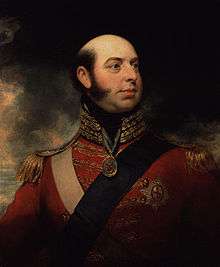Old Burying Ground (Halifax, Nova Scotia)
|
| |
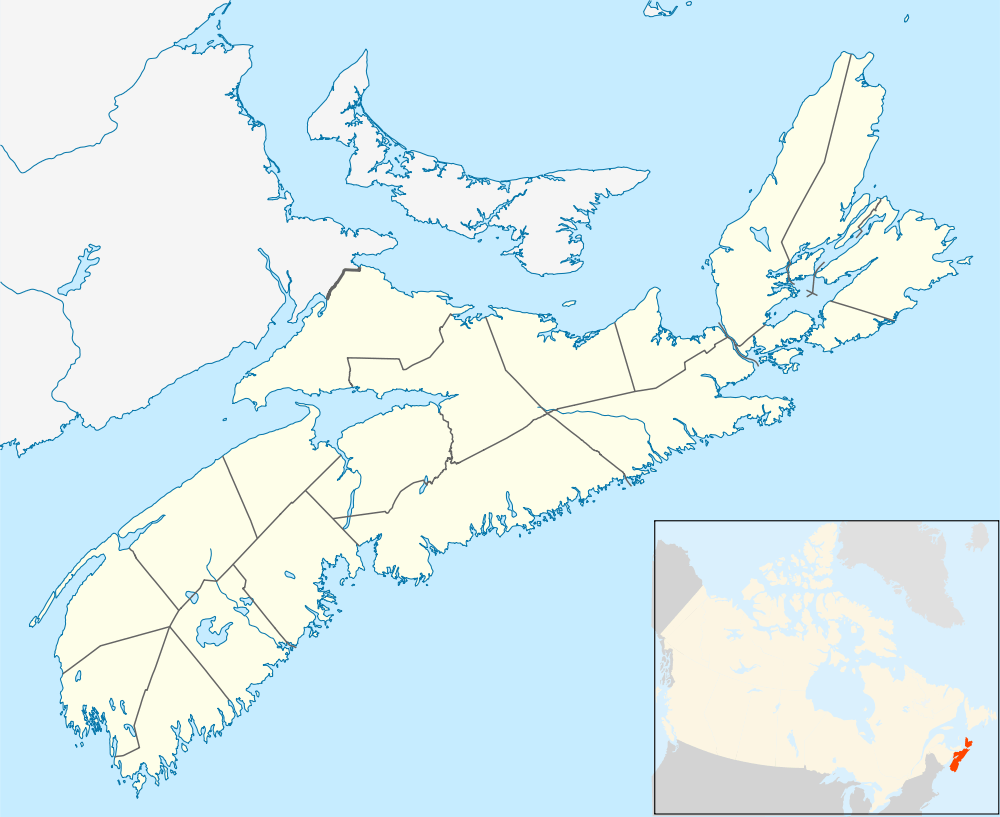 Nova Scotia | |
| Details | |
|---|---|
| Established | 1749 |
| Location | Halifax, Nova Scotia |
| Country | Canada |
| Coordinates | 44°38′36″N 63°34′22″W / 44.6434°N 63.5728°WCoordinates: 44°38′36″N 63°34′22″W / 44.6434°N 63.5728°W |
| Type | Closed |
| Owned by | St. Paul's Church (Halifax) |
| Number of graves | 12,000+ |
| Official name | Old Burying Ground National Historic Site of Canada |
| Designated | 1991 |
| Type | Provincially Registered Property |
| Designated | 1988 |
The Old Burying Ground (also known as St. Paul's Church Cemetery) is a historic cemetery in Halifax, Nova Scotia, Canada. It is located at the intersection of Barrington Street and Spring Garden Road in Downtown Halifax.
History
The Old Burying Ground was founded in 1749, the same year as the settlement, as the town's first burial ground. It was originally non-denominational and for several decades was the only burial place for all Haligonians. (The burial ground was also used by St. Matthew's United Church (Halifax).) In 1793 it was turned over to the Anglican St. Paul's Church. The cemetery was closed in 1844 and the Camp Hill Cemetery established for subsequent burials. The site steadily declined until the 1980s when it was restored and refurbished by the Old Burying Ground Foundation, which now maintains the site and employ tour guides to interpret the site in the summer. Ongoing restoration of the rare 18th century grave markers continues.
Over the decades some 12,000 people were interred in the Old Burial Ground. Today there are only some 1,200 headstones, some having been lost and many others being buried with no headstone. Many notable residents are buried in the cemetery, including British Major General Robert Ross, who led the successful Washington Raid of 1814 and burned the White House before being killed in battle at Baltimore a few days later.
The most prominent structure is the Welsford-Parker Monument, a Triumphal arch standing at the entrance to the cemetery commemorating British victory in the Crimean War. This is the second oldest war monument in Canada and the only monument to the Crimean War in North America. The arch was built in 1860, 16 years after the cemetery had officially closed. The arch was built by George Lang and is named after two Haligonians, Major Augustus Frederick Welsford and Captain William Buck Carthew Augustus Parker. Both Nova Scotians died in the Battle of the Great Redan during the Siege of Sevastopol (1854–1855). This monument was the last grave marker in the cemetery.
The Old Burying Ground was designated a National Historic Site of Canada in 1991.[1] It had earlier been designated a Provincially Registered Property in 1988 under Nova Scotia's Heritage Property Act.[2]
Prominent tombstones
-

Lieut. Col James Fullarton, d. 1834, Battle of Waterloo, Battle of Corunna, Battle of Barrosa, Canada (1803-1805)[1][2][3]
-
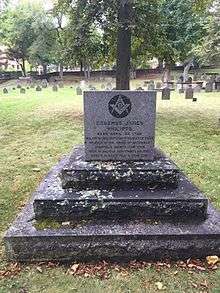
Erasmus James Philipps, d.1760, founded the first Masonic lodge in Canada, participated in the Battle of Grand Pré and the Cape Sable Campaign
-

Grave of Sir Thomas Ussher's wife, Eliza Ussher, d. 1835
-

Grave of William Lawson's father and family
Notable interments
Founding of Halifax (1749-1776)
-

John Rous' daughter Mary, d. 1775 (Rous was in the Battle at Chignecto, Siege of Louisbourg (1758))
-
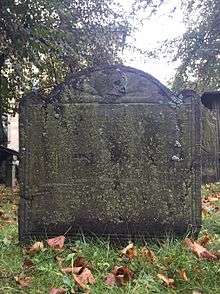
John Connor (mariner), d. 1757, involved in Attack at Mocodome
-

Erasmus James Philipps, d.1760, founded the first Masonic lodge in Canada, participated in the Battle of Grand Pré and the Cape Sable Campaign
-
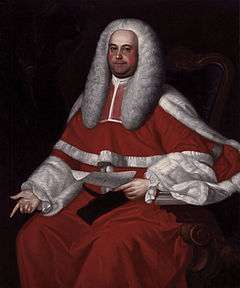
Jonathan Belcher (jurist), d.1776, participated in the Burying of the Hatchet ceremony with Mi'kmaq in Halifax (1761)
-

Abigail Belcher, wife of Jonathan Belcher
-
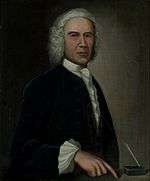
Malachy Salter, d. 1781
-

Catholic Priest Pierre Maillard was buried in the church yard.[1]
-
Richard Bulkeley's wife, d. 1775[2]
-
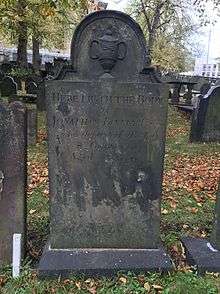
Jonathan Binney, d.1807, signed Peace Treaty with Mi'kmaq people (1761)
- ^ Collections of the Nova Scotia Historical Society. Vol. 1, p. 44
- ^ The location of both Charles Morris and Richard Bulkeley are unknown. Both Charles Morris and Richard Bulkeley have wives buried in the burial ground but they are not. Given the stature of both men, if they had tombstones, they would have been prominent. They both have a hatchment in the church. Given that everyone else who has a hatchment is buried in the church, the assumption is made Morris and Bulkeley are buried in the church. While a display inside the St. Paul's Church (Halifax) states that Bulkeley is buried in the crypt, according to J. Philip McAleer, author of A pictorial history of St. Paul's Anglican Church, Halifax, Nova Scotia, the evidence that Bulkeley was buried in the church is circumstantial. This circumstantial evidence rests on the fact that he helped establish the church and was an active member in it for 51 years. Also Bulkeley is reported to have had the largest funeral ceremony ever to be in Halifax up to that date. Further, his wife Mary Rous has a headstone in the St Paul's Church Cemetery, while Bulkeley does not. Rev Hill, however reports that Bulkeley's grave is marked by a rude stone in St. Paul's Church cemetery, presumably close to the gravestone of his wife Mary Rous. (See Collections of the Nova Scotia Historical Society, Vol. 2, p. 69)
- Mary Morris, wife of Charles Morris (surveyor general)
- James Brenton
Siege of Louisbourg (1745)
Many of those who first established Halifax arrived from Cape Breton, which the British of New England occupied since their Siege of Louisbourg (1745). The following participated in the Siege:
-

Benjamin Green, d.1772
-

Joseph Gerrish, d.1774; also wounded at the Battle of Grand Pre
-

Winckworth Tonge,d. 1792, also fought in Battle of the Plains of Abraham
- Joseph Fairbanks, d.1790
American Revolution
Military figures
-

Hibbert Newton Binney, d. 1842, Ensign, Royal Nova Scotia Volunteer Regiment;[1][2][3] son-in-law of John Creighton (judge)[4]
- ^ image of brother Stephen Hall Binney
- ^ http://gwydir.demon.co.uk/jo/genealogy/binney/hibbert1.htm
- ^ Public Archives of Nova Scotia, RG 20A, Volume 2, No. 1784-24
- ^ Beck, J. Murray (1983). "Creighton, John". In Halpenny, Francess G. Dictionary of Canadian Biography. V (1801–1820) (online ed.). University of Toronto Press.
- ^ Harvard
- ^ p. 625
- John F. T. Gschwind (d. 1827), surgeon for Hessians; arrived in Halifax 1781[3]
- Lieut. John Stuart (d. 1835), 71st Regiment of Foot, Fraser's Highlanders
- Captain William Burton (abt. 1748 - 1817)[4][5]
- Lt. Charles Thomas (son of Nathaniel Thomas, Loyalist),
- Charles Grant - fought in the French and Indian War, Pontiac's War, and the American Revolution (New York and New Jersey campaign, the Philadelphia campaign, Battle of Stony Point, the Siege of Charleston, and the Siege of Yorktown)[6]
Boston Loyalists
The following were Loyalist refugees who settled in Halifax after they were banished from New York and Massachusetts. Reflective of the fate of many of the Loyalists, the grave of Edward Winslow (scholar) is inscribed: "his fortune suffered shipwreck in the storm of civil war." Part of the devastation of the war resulted from American family members having to choose sides. For example, the story of one American patriot listed below, Benjamin Kent. While in Boston he imprisoned his son-in-law Sampson Salter Blowers for being a Loyalist. Blowers and the rest of Kent's family (including his wife) escaped to Halifax (1776). After the war, Kent eventually moved to Halifax to be with his family, which included Chief Justice Blowers (1885). Both Blowers and Kent are buried in the Old Burying Ground.
-
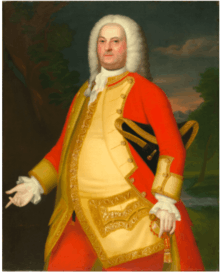
William Brattle, d. 1776, "wealthiest man in Boston", silversmith, owner of William Brattle House, unmarked grave [1][2][3] [4]
-
_by_Copley.png)
James Murray (1713-1781) by Copley; [5][6][7][8]
-

John Winslow's brother Edward Winslow (scholar), d. 1784 [9][10][11][12][13][14][15][16]
-

John Howe, d. 1835, father of Joseph Howe
-
.png)
John Halliburton (surgeon), d.1808
-

Loyalist Massachusetts Governor Thomas Hutchinson's brother Foster Hutchinson (judge), Sr., d. 1799 [17][18][19] [20][21]
-

Nova Scotia Gov. Paul Mascarene's grandchild Foster Hutchinson Jr., Chief Justice, d. 1815,[22] [23][24][25][26]
-

Chief Justice Sampson Salter Blowers, d.1842 - instrumental in ending slavery in Nova Scotia; son-in-law of Benjamin Kent
-
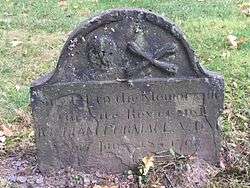
Reverend William Furmage (d. 1793), Huntingdonian Missionary to the Black Loyalists; established Black school in Halifax[27][28]
-

Rebecca Byles Almon, d. 1852, wife of William James Almon (surgeon, Battle of Bunker Hill); oldest child of Mather Byles[29][30]
- ^ p. 174
- ^ William Brattle Biography. New England Life in the Eighteenth Century: Representative Biographies from ... By Clifford Kenyon Shipton. Harvard University Press. 1963. pp. 198-212
- ^ silversmith
- ^ Find A Grave - William Brattle
- ^ Find a grave image
- ^ James Murray (1713-1781) Letters of James Murray, Loyalist. There is also a Jacob Murray buried 1781.
- ^ http://66.43.22.135/cgi-bin/fg.cgi?page=gr&GSsr=81&GSmcid=48857516&GRid=162269018&df=90&
- ^ Dictionary of North Carolina Biography
- ^ p. 711
- ^ Find a grave image
- ^ Father of Edward Winslow (loyalist) who was one of the founders of New Brunswick; his former home now belongs to the Mayflower House Museum
- ^ Winslow's tombstone is inscribed in part "his fortune suffered shipwreck in the storm of civil war", the "civil war" being the American Revolution, American Patriots fighting American Loyalists.
- ^ p. 786
- ^ https://archive.org/stream/winslowmemorialf0001holt#page/58/mode/2up/search/nova+scotia
- ^ https://archive.org/stream/winslowmemorialf0001holt#page/58/mode/2up/search/nova+scotia
- ^ https://archive.org/stream/collectionsmass35socigoog#page/n190/mode/2up/search/edward
- ^ There were four judges of the Superior Court in Massachusetts at the time of the revolution. Foster Sr. was among the four judges who were Loyalists. See American Loyalists, p. 491
- ^ Legal Papers of John Adams, Volume 1 By John Adams, p. cii
- ^ Thomas letter to Foster
- ^ house image
- ^ American Loyalist, p. 376
- ^ grandchild of Mass. Gov. Thomas Hutchinson (governor); son Hon Foster Hutchinson Sr. d. 1799; decedent of Anne Hutchinson
- ^ Gentleman's Magazine
- ^ p.177
- ^ Another Grandchild of NS Gov. Paul Mascarene was William Handfield Snelling
- ^ p. 27
- ^ Jack C. Whytock. The Huntingdonian Missionaries to Nova Scotia and New Brunswick, c. 1785-1792
- ^ Jack C. Whytock. Historical Papers 2003: Canadian Society of Church History. Edited by Bruce L. Guenther, p.154.
- ^ http://66.43.22.135/cgi-bin/fg.cgi?page=gr&GSob=n&GSsr=41&GScid=2203785&GRid=163057397&
- ^ Canadian Biography
- ^ Canadian Biography
- ^ Cite error: The named reference
uelac_halifaxwas invoked but never defined (see the help page).
- Governor Paul Mascarene's grandchild William Handfield Snelling, d. 1838[7] [8]
- Benjamin Kent, American patriot, d. 1788, and his wife Elizabeth, d. 1802[9][10][11][12][13]
- Capt. William Burton, 98th Regiment of Foot, d. 1817 (Boston)[14]
- William Pepperrell's grandson William Pepperrell, d. 1837, 34th Regiment of Foot[15]
- Martha Howe, wife of John Howe, mother of Joseph Howe
- Peter Etter, d. 1794, a loyalist originally from Switzerland; father of Benjamin Etter[16][17]
- William Taylor, d. 1810, a Boston merchant; father of James Taylor (Nova Scotia politician)[17]
- Peter Lennox;
- Jonathan Sterns, d. 1798, killed by Attorney General Richard John Uniacke
- Gilbert Stuart,
- Gregory Townsend[18]
New York Loyalists
-

Bishop Charles Inglis's daughter Margaret (Inglis) Halliburton, advocated for education for Black Nova Scotians [1]
-

Lawrence Hartshorne, d. 1822, a Quaker who was the chief assistant of John Clarkson (abolitionist) in helping the Black Nova Scotian Settlers emigrate to Sierra Leone (1792) [2][3]
- ^ Loyalists in the Old Burying Ground
- ^ Canadian Biography Also see Hartshorne's portrait by Robert Field (painter)
- ^ Find a Grave
French Revolutionary Wars (1792-1802)
During the French Revolutionary Wars, Prince Edward was stationed in Halifax and personally commemorated three military personnel who died while on duty in Halifax.
Prince Edward Comemorations
- Lt. Benjamin James, Royal Nova Scotia Regiment, died while trying to rescue those who died in the HMS Tribune (1797); [22]
- Charles Thomas, H.M. 7th Royal Fusiliers regiment, died from friendly fire; [23][24]
- James Brace Sutherland (c.1782 - September 25, 1798), son of Captain Andrew Sutherland; a midshipman who died in storm, age 16, in Halifax harbour on board the Prévoyante (1793) [25][26]
Other
-
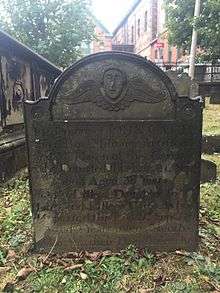
Serg. John Catto Soldier Artificer Company and Mr. Mason of Halifax Garrison, d.1802[1]
Napoleonic Wars (1803–1815)
-

Lieut. Col James Fullarton, d. 1834, Battle of Waterloo, Battle of Corunna, Battle of Barrosa, Canada (1803-1805)[1][2][3]
- Thornhill, Lieut. M. Johns'n 03 Jan. 1812 HM 99, Prince of Wales Tipper
War of 1812
-
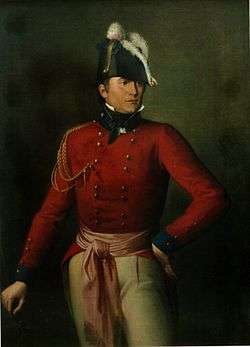
Robert Ross (British Army officer), d. 1814
-

William Hughes, d. 1813, Master Shipwright, HM Dockyard[1]
-

Sgt. Richard Smith, 104th (New Brunswick) Regiment of Foot; made the 600 men march from Fredericton, N.B., to Kingston, Ont. between February and April 1813; wounded five times in the Battle of Fort Erie, 1814 [2][3][4]
- ^ https://archive.org/stream/navalchroniclefounse_1#page/512/mode/1up
- ^ Graveside Project - Richard Smith
- ^ Chronicle Herald
- ^ The 104th (New Brunswick) Regiment of Foot in the War of 1812 John R. Grodzinski
- Lieut, Col. John-Fowell (J.F.) Goodridge, 62nd Regiment of Foot (Jan. 1768-12 Nov. 1819) - monument erected by the 62nd in his memory; buried his 2 year old in Halifax who died in fire [27][28]
- William Ross, d. 1822, Nova Scotia Fencibles; founder of Ross Farm, Lunenburg County, Nova Scotia
- Esther Rowlands (1777- 28 February 1817), wife of Dr. David Rowlands, the surgeon for the Royal Naval Hospital at Halifax[29][30][31][32][33]
Privateers
- Captain Benjamin Ellenwood, d. 1815, murdered
- Captain Ebenezer Herrington, d.1812, HMS Chub, friendly fire[34]
Military Officers (1816-1844)
-
.png)
Eliza Ussher, d. 1835, wife of Commodor Sir Thomas Ussher, who conveyed Napoleon Bonaparte into exile in Elba (1814).[1]
-

John Stewart, 71st Regiment of Foot, d. 1835
- Commander John George Deware, HMS. Rose. d. 1830
- John Thompson, Surgeon, HMS Saracen, d. 1818
- Lt. Col. Peter Waterhouse, d. 1823, 81st Regiment (plaque in St. Paul's)[35]
- Serg William George, 74th (Highland) Regiment of Foot, d. 1828
- Charles F. Norton, Captain of 52nd Light Infantry, d. 1832; son-in-law of Sir Colin Campbell; brother-in-law of writer Caroline Norton
- William Pepperell, Quarter Master of the 34th Regiment of Foot, d. 1837
- Elizabeth Pepperell, grand daughter of William Pepperell through marriage, d. 1775; wife of grandson William Pepperrell[36] [37]
- Col Sgt. John Reilly, 64th (2nd Staffordshire) Regiment of Foot, d. 1842
- John Ross, R.N., d. 1844
- Lieut. Charles A. Ross, R.N., d. 1828
- Lieut. James Philips, RN, d. 1821
- Westmount, Capt. John 4 May 1816, Royal Staff Corps
Other
-

John Gillespie, d. 1772, 1st President of North British Society[1]
-

Ann Scott (d.1776), midwife, gravestone: "She will be greatly missed by the people of Halifax"
-
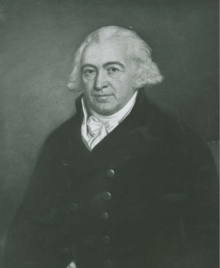
Hon Thomas Cochran, d. 1801, and his family.[2]
-

Sir Richard Westmacott's brother Architect John Westmacott, d. 1816; Richard reported to have created several marble mantles in Government House[3][4][5][6]
-

William Bowie (merchant), d. 1819, (killed by Richard John Uniacke, Jr. in the last duel in Nova Scotia)[7]
-
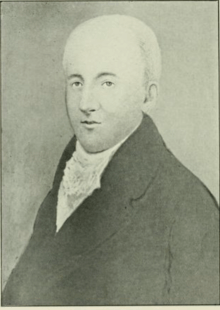
Hon James Fraser, d. 1822
-
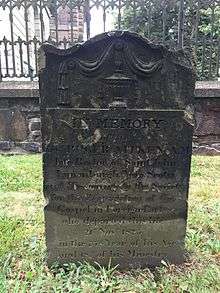
Rev. Roger Aitken (d. 1825), missionary at Lunenburg for Society for the Propagation of the Gospel in Foreign Parts (SPG),[8] St. John's Anglican Church (Lunenburg)
-

John Lawson, d. 1828, father of William Lawson, first president of the Bank of Nova Scotia
-

2nd Elizabeth Lawson, d.1819, wife of John Lawson
-

Peter McNab, namesake of McNabs Island
-
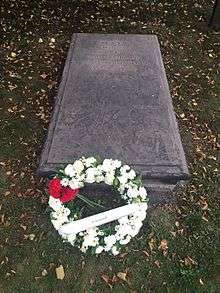
Susan Cunard, wife of Samuel Cunard, d. 1828
-

Brewer Alexander Keith's first wife Sarah Ann, d. 1832, and the first two children with his second wife[9]
-

Hon Stedman Rawlins, Slave/ Plantation Owner; d. 1830, President of His Majesty's Council of the Island of St. Christopher
-

Rev Archibald Gray, d. 1831, St. Matthew's United Church (Halifax) for 35 years
-
.png)
John Albro, d.1839
- ^ Annals. North British Society
- ^ Cochran-Inglis family of Halifax by Eaton, Arthur Wentworth Hamilton, 1899.
- ^ Biographical Dictionary of Architects in Canada
- ^ Gentleman's Magazine
- ^ True Stories from Nova Scotia's Past By Dianne Marshall
- ^ Harris. The Church of St. Paul in Halifax, p. 230
- ^ Image and Bio of Bowie. Annals, North British Society
- ^ History of the County of Lunenburg By Mather Byles DesBrisay, p. 86
- ^ Note both children are also named on their father's grave stone in Camp Hill Cemetery.
- Mary Welsford, mother of Parker Welsford (Welsford-Parker Monument)[38]
- Charles Morris (1759–1831)
- William Annand, father of William Annand
- Robert Collins (d. 26 March 1812) and his wife Sarah (Wisdom) Collins (d. 31 Jan. 1812), namesake of Collins Grove, Dartmouth[39]
- James Gautier [40]
- Honorable Charles Hill (jurist) d. 1825; director of the Shubenacadie Canal Company[41]
- John Thomas Twining, d. 1832, son of John Thomas Twining[42]
- Phoebe Perkins, d. 1820, wife of Rev. Cyrus Perkins, Rector of Annapolis, 1807-1817,[43][44][45]
Depictions in Media
In Lucy Maud Montgomery's Anne of the Island, Anne moves to Kingsport (Halifax, Nova Scotia) on the mainland and enrols at Redmond (Dalhousie University).[46] She takes lodgings in an apartment that looks out over "Old St. John's Cemetery" - the Old Burying Ground:
They went in by the entrance gates, past the simple, massive, stone arch surmounted by the great lion of England.... They found themselves in a dim, cool, green place where winds were fond of purring. Up and down the long grassy aisles they wandered, reading the quaint, voluminous epitaphs, carved in an age that had more leisure than our own.[46]
The text goes into some depth about the gravestone carvings and styles:
Every citizen of Kingsport feels a thrill of possessive pride in Old St. John’s, for, if he be of any pretensions at all, he has an ancestor buried there, with a queer, crooked slab at his head, or else sprawling protectively over the grave, on which all the main facts of his history are recorded. For the most part no great art or skill was lavished on those old tombstones. The larger number are of roughly chiselled brown or gray native stone, and only in a few cases is there any attempt at ornamentation. Some are adorned with skull and cross-bones, and this grizzly decoration is frequently coupled with a cherub’s head. Many are prostrate and in ruins. Into almost all Time’s tooth has been gnawing, until some inscriptions have been completely effaced, and others can only be deciphered with difficulty. The graveyard is very full and very bowery, for it is surrounded and intersected by rows of elms and willows, beneath whose shade the sleepers must lie very dreamlessly, forever crooned to by the winds and leaves over them, and quite undisturbed by the clamor of traffic just beyond.[46]
See also
- Garrison Cemetery (Annapolis Royal, Nova Scotia)
- Royal Navy Burying Ground (Halifax, Nova Scotia)
- St. John's Anglican Church (Lunenburg)
References
- ↑ Old Burying Ground National Historic Site of Canada. Canadian Register of Historic Places. Retrieved 13 April 2013.
- ↑ Old Burying Ground. Canadian Register of Historic Places. Retrieved 13 April 2013.
- ↑ p. 142
- ↑ Wiki Tree
- ↑ p. 186
- ↑ http://66.43.22.135/cgi-bin/fg.cgi?page=gr&GSob=n&GSsr=481&GScid=2203785&GRid=164094020&
- ↑ Deputy Commissary General at Halifax
- ↑ https://books.google.ca/books?id=SvdGAQAAMAAJ&pg=PA226&lpg=PA226&dq=General+W.+Handfield+Snelling&source=bl&ots=nW6S88bXwI&sig=aYkL8WRBmFZaMf_mSdIeWRgwAl4&hl=en&sa=X&ved=0ahUKEwi50O7Ou8fPAhXl34MKHce0BpkQ6AEIIzAB#v=onepage&q=General%20W.%20Handfield%20Snelling&f=false
- ↑ Benjamin Kent - American Loyalist, p. 409
- ↑ http://boston1775.blogspot.ca/search/label/Benjamin%20Kent
- ↑ http://founders.archives.gov/documents/Adams/06-02-02-0048
- ↑ graduate of harvard 1727; attorney general; 1776-1780 at Suffolk
- ↑ https://books.google.ca/books?id=UlibMcgeiJMC&pg=PR102&lpg=PR102&dq=%22benjamin+kent%22+harvard+1727&source=bl&ots=jJi02QRLPP&sig=PzwMzM8cEelIDnPKQQl5437lzDA&hl=en&sa=X&ved=0ahUKEwiYs-mf9crPAhVK74MKHQziBYwQ6AEIITAB#v=onepage&q=%22benjamin%20kent%22%20harvard%201727&f=false
- ↑ http://www.wikitree.com/wiki/Burton-5171
- ↑ Life of William Pepperrell, p. 338
- ↑ Canadian Biography
- 1 2
- ↑ p. 650
- ↑ http://www.biographi.ca/en/bio/deblois_sarah_6E.html
- ↑ Image and Brief bio. Annals. North British Society
- ↑ Geddes - Loyalist
- ↑ History of the county of Annapolis. p. 350
- ↑ Prince Edward was his commander and etched on his stone: "This Stone Sacred to the Memory of Lieut. Chales Thomas of His Majesty's Royal Fusilier Regiment who departed this Life on the 16 August 1797, Aged 24 years; is placed as a Testimony of His Friendship and Esteem by Lieut. General His Royal Highness Prince Edward his Colonel."
- ↑ Halifax Acadian Recorder, April 15, 1920
- ↑ Naval Chronicle Vol. 1, p. 174
- ↑ Sutherland
- ↑ A Genealogical and Heraldic History of the Commoners of Great ..., Volume 4 By John Burke, p. 435
- ↑ The Royal Military Calandar
- ↑ Naval Chronicle, p. 440
- ↑ To Dr Rowlands, On the death of his wife, Naval Chronicle, Vol. 37, p. 497
- ↑ Gentleman's Magazine
- ↑ Ashore and Afloat: The British Navy and the Halifax Naval Yard Before 1820 By Julian Gwyn, pp. 50-53
- ↑ Dr. Rowlands obituary
- ↑ Deborah Trask. Putting the War of 1812 to Rest. Royal Nova Scotia Historical Society Journal. Vol. 18, 2015, p.49
- ↑ p. 71
- ↑ Life of William Pepperrell, p. 338
- ↑ https://archive.org/stream/pepperrellsiname00howa#page/36/mode/2up/search/halifax
- ↑ p. 16
- ↑ http://www.brookhousepress.ca/louisa/appendix/a.htm
- ↑ Collections of the Nova Scotia Historical Society, Volumes 7-10 By Nova Scotia Historical Society, Halifax, p. 152
- ↑ Canadian Biography
- ↑ Canadian Biography
- ↑ Rev. Perkins was born at Horton, Nova Scotia and studied at Kings College, Windsor, Nova Scotia to become a missionary for the Society for the Propagation of the Gospel. He died inTorbay, Devon, England. (See Nova Scotia Archives
- ↑ A Geography and History of the County of Digby
- ↑ p. 45)
- 1 2 3 "Anne of the Island, by Lucy Maud Montgomery". www.gutenberg.org. Retrieved 2016-11-20.
External links
- Memorials at St. Paul's Church. Acadiensis. Vol. 5, p. 57
- The (Old St. Paul's) Burying Ground
- Halifax's Old Burying Ground
- Old Burying Ground Foundation
- List of People buried in cemetery
- Finda a Grave - list of gravesite with photos
- Honours Thesis. St. Mary's University
- Loyalists in the Old Burying Ground
- Nova Scotia Museum

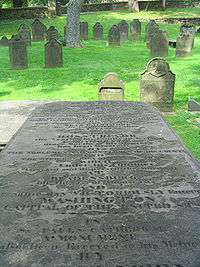



.png)

